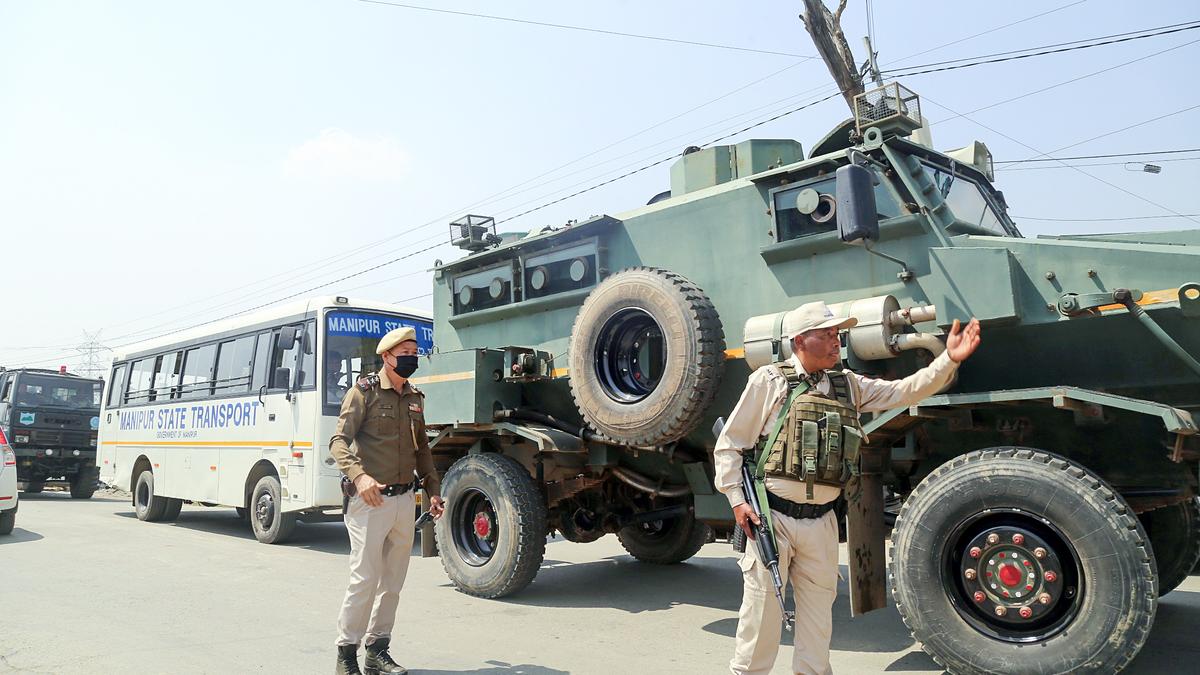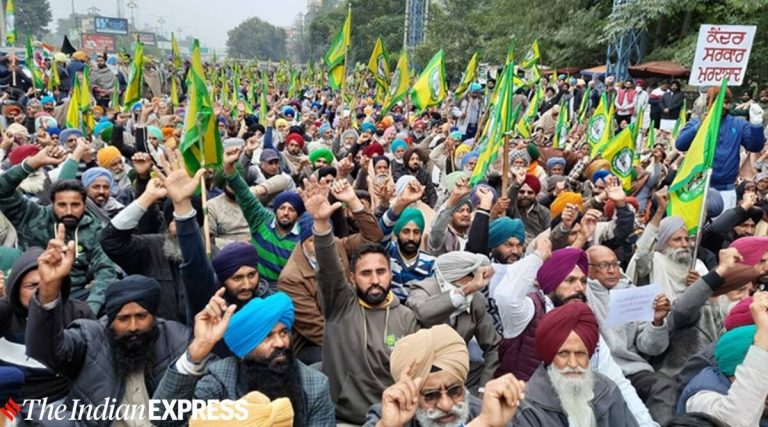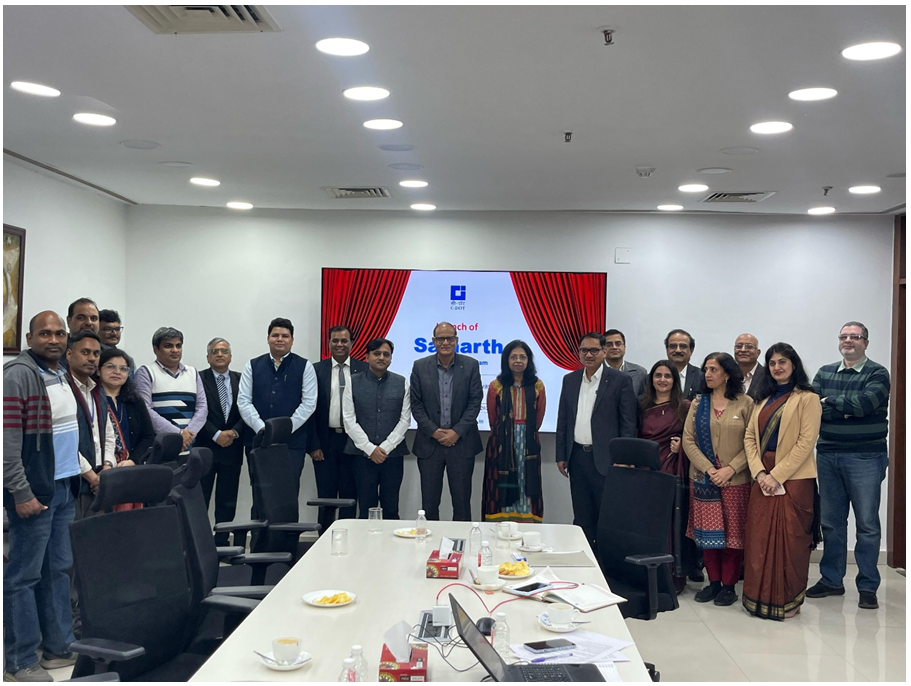Exercise Sea Dragon 2025

- 22 Mar 2025
In News:
India successfully concluded its participation in Exercise Sea Dragon 2025, a two-week multinational anti-submarine warfare (ASW) drill conducted in the Indo-Pacific region, hosted by the United States Navy’s 7th Fleet.
About Exercise Sea Dragon 2025
- Type: Annual Multinational Anti-Submarine Warfare (ASW) Exercise
- Duration: Two weeks
- Location:Andersen Air Force Base, Guam, Western Pacific
- Host: U.S. Navy’s 7th Fleet
- Inception: Started as a bilateral US-Australia exercise in 2019; expanded to include more Indo-Pacific allies.
- India’s Participation: Since 2021; SD25 marks India’s 4th consecutive participation.
Objectives of Sea Dragon 2025
- Enhance Maritime Security and regional naval cooperation
- Strengthen anti-submarine warfare capabilities
- Improve interoperability and coordination among Indo-Pacific allies
- Promote a free, open, and rules-based Indo-Pacific
- Address undersea threats, particularly in light of China’s growing maritime presence
Key Features of Sea Dragon 2025
- Live ASWEX: Tracking of real U.S. Navy submarines
- Mobile Drills: Use of MK-30 ‘SLED’ (Submarine Launch Expendable Device) as training targets
- Competitive Phase: Crews evaluated and graded based on ASW tactics and effectiveness
- Theoretical + Practical Training: Included tactical discussions, submarine detection, and neutralization scenarios
- Deployment of Advanced MPRA (Maritime Patrol and Reconnaissance Aircraft): Equipped with sonobuoys and sensors for submarine tracking
Significance for India
- Improves ASW Readiness and operational capabilities of the Indian Navy
- Strengthens ties with Quad members (U.S., Australia, Japan) and other Indo-Pacific partners
- Supports India’s broader strategy of naval modernization
- Aligns with India’s efforts to safeguard its interests in the Indian Ocean Region (IOR) and maintain regional stability.
Outcome
- RAAF (Australia) emerged as the top-performing team in the competitive phase.
- India successfully demonstrated its capabilities and reaffirmed commitment to Indo-Pacific security cooperation.
AFSPA in the Northeast

- 22 Mar 2025
In News:
The Union Ministry of Home Affairs (MHA) is reviewing the scope of the Armed Forces (Special Powers) Act, 1958 (AFSPA) in the Northeast, especially in light of ongoing ethnic violence in Manipur and security reviews in Nagaland, Arunachal Pradesh, and Assam.
What is AFSPA?
- AFSPA (1958) empowers the armed forces to maintain public order in ‘disturbed areas’.
- It authorizes armed forces to:
- Use force or open fire after due warning.
- Arrest without a warrant.
- Conduct searches without a warrant.
- Enjoy legal immunity from prosecution without prior sanction of the Central Government.
Declaration of Disturbed Area
- A region is declared ‘disturbed’ through a notification in the Official Gazette.
- The declaration can be made by:
- Governor of a State, or
- Central Government.
- Duration: Notifications are valid for 6 months, reviewed periodically for extension or withdrawal.
AFSPA in Manipur: Recent Developments
- AFSPA was withdrawn from all valley police stations between April 2022–April 2023 due to improved law and order.
- However, after ethnic violence erupted on May 3, 2023, the Act was reimposed in 6 police stations across 5 districts (mostly in valley areas) as of November 14, 2024.
- At a review meeting on March 20, 2025, the Indian Army proposed re-imposition of AFSPA in 12 more police station limits in Manipur Valley for operational efficiency.
- President’s Rule has been in force in Manipur since February 13, 2025.
- The final decision on AFSPA expansion in Manipur will be taken by the MHA.
Status in Other Northeastern States
- The MHA held a multi-agency review on March 19, 2025, regarding AFSPA coverage in Nagaland, Arunachal Pradesh, Assam, and Manipur.
- Current Authority to Notify Disturbed Areas:
- MHA: Nagaland and Arunachal Pradesh.
- State Governments: Manipur and Assam.
- Possible De-Notification: One district in Assam may be removed from AFSPA coverage based on the latest review.
Legal and Administrative Background
- AFSPA came into force in Manipur in 1981.
- Manipur attained Statehood in 1972, earlier being a Union Territory.
- The Imphal Municipality area has remained outside AFSPA since 2004.
- The most recent “disturbed area” notification for hill districts in Manipur was issued on September 26, 2024.
States Under AFSPA (as of February 2025)
- Manipur
- Nagaland
- Arunachal Pradesh
- Assam
- Jammu and Kashmir
PEPSU Muzhara Movement

- 22 Mar 2025
In News:
The PEPSU Muzhara Movement, commemorated annually on March 19, was a significant agrarian uprising by landless tenant farmers (muzharas) in Punjab demanding ownership rights over the land they cultivated. It stands as a historic resistance against feudal and colonial exploitation.
Background & Region
- Initiation: Started in the 1930s in the Patiala princely state.
- Expanded Across: 784 villages in present-day Patiala, Barnala, Mansa, Sangrur, Bathinda, Mohali, Fatehgarh Sahib, Faridkot (Punjab), and Jind (now in Haryana).
- After independence, the region was reorganized into the Patiala and East Punjab States Union (PEPSU), where the movement intensified.
Who Were the Muzharas?
- Muzharas were landless tenant farmers who cultivated land owned by biswedars (feudal landlords).
- They were forced to give one-third of their produce to landlords, who further paid a share to princely rulers, who in turn paid the British.
- Even after Independence (1947), landlords continued this exploitative practice, leading to widespread unrest.
Causes of the Movement
- Feudal oppression and loss of ancestral land.
- Colonial revenue structure perpetuated peasant poverty.
- Post-independence continuation of feudal demands.
- Denial of land ownership despite generations of cultivation.
Key Leaders
- Jagir Singh Joga – Organised and united tenant farmers.
- Buta Singh – Advocate for land redistribution.
- Teja Singh Sutantar – Linked the struggle with broader peasant movements.
- Sewa Singh Thikriwala – Anti-feudal ideologue and early inspiration.
- Bhai Jodh Singh – Strengthened the movement through grassroots mobilisation.
Phases and Nature of the Movement
- Peaceful Protests: Initial petitions and mobilisations.
- Armed Resistance: Tenant farmers took up arms for self-defense as repression increased.
- Mass Mobilisation: Conferences, rallies, and united action across villages.
Significance of March 19
- In March 1949, landlords attempted to reclaim cultivated lands in Kishangarh (Mansa district).
- The muzharas resisted by harvesting crops themselves, leading to a violent standoff.
- On March 17, a police officer was killed, resulting in the arrest of 35 muzharas—all acquitted by 1950.
- On March 19, 1949, the army surrounded the village, and four muzharas were killed.
- Since 1953, March 19 has been observed as “Muzhara Shaheedi Diwas”, honouring martyrs of the movement.
Outcome
- Land Reforms (1952): The movement culminated in reforms granting ownership rights to tenant farmers.
- Became a symbol of peasant resistance against exploitation and injustice.
Samarth Incubation Programme

- 22 Mar 2025
In News:
The ‘Samarth’ Incubation Programme is a strategic initiative launched by the Centre for Development of Telematics (C-DOT) to foster startup-driven innovation in India’s rapidly evolving telecommunications and IT sectors. This programme aligns with the goals of Atmanirbhar Bharat and Digital India, aiming to build indigenous capabilities in cutting-edge technologies.
Key Highlights:
- Launched By:Centre for Development of Telematics (C-DOT), an autonomous R&D centre under the Department of Telecommunications (DoT), Government of India.
- Implementation Partner:Software Technology Parks of India (STPI), under the Ministry of Electronics and Information Technology (MeitY), which promotes IT/ITES innovation, startups, and R&D.
- Launch Date:19th March 2025.
- Objective:To support DPIIT-recognized startups developing next-generation technologies in the fields of:
- Telecom Software
- Cybersecurity
- 5G/6G Communications
- Artificial Intelligence (AI)
- Internet of Things (IoT)
- Quantum Technologies
- Program Structure:
- Two cohorts, each of six months duration.
- 18 startups per cohort (Total of 36 startups).
- Hybrid mode of delivery (virtual + physical support).
Support and Benefits Provided
- Financial Assistance:Grant of up to ?5 lakh per selected startup.
- Infrastructure Access:
- Fully furnished office space for 6 months at the C-DOT campus.
- Access to C-DOT’s lab and testing facilities.
- Mentorship & Networking:
- Guidance from C-DOT technical experts and industry leaders.
- Connection with investors, stakeholders, and potential collaborators.
- Future Opportunities:Eligible startups may be offered continued collaboration under the C-DOT Collaborative Research Program, based on their performance and innovation outcomes.
Selection Process
- Eligibility:Open to startups recognized by the Department for Promotion of Industry and Internal Trade (DPIIT).
- Screening:Applications are evaluated through a structured selection process:
- Screening of applications based on innovation potential.
- Pitch presentation before an expert selection committee.
- Final cohort selection.
Significance for India’s Tech Ecosystem
- Promotes self-reliance in telecom and IT hardware/software innovation.
- Encourages the commercialization of research and ideas in emerging technology domains.
- Creates a supportive ecosystem for startups to thrive through structured mentorship and funding.
- Contributes to job creation and skill development in advanced digital sectors.
APAAR ID

- 22 Mar 2025
In News:
The Centre and several State governments are pushing for large-scale adoption of the APAAR ID, leading to concerns over privacy, data security, and its voluntary status.
What is APAAR?
APAAR stands for Automated Permanent Academic Account Registry, a 12-digit unique student identification number. It is a central digital record system introduced under the National Education Policy (NEP) 2020 and is part of the broader ‘One Nation, One Student ID’ initiative. The ID consolidates students’ academic and co-curricular achievements across school and higher education, accessible via DigiLocker and generated through the UDISE+ portal.
Objectives and Benefits:
- Seamless Academic Mobility: Enables smooth transfers between schools and institutions.
- Permanent Record Keeping: Stores marksheets, qualifications, and affiliations in one place.
- Career and Skill Support: Facilitates use in entrance exams, job applications, skill training, and admissions.
- Data for Policymaking: Helps track educational outcomes and inform targeted interventions.
- Integration with Other Platforms:
- DigiLocker: Cloud-based certificate storage recognized under IT Rules, 2016.
- Academic Bank of Credits (ABC): Links credit transfers with APAAR ID.
Is APAAR Mandatory?
- Legally Voluntary: The Union Government clarified in Parliament (Dec 2024) that APAAR registration is not compulsory.
- Implementation Pressure: CBSE and states like Uttar Pradesh have aggressively pushed for 100% coverage, leading to confusion.
- Opt-Out Provision: Parents can submit a written refusal to schools. Templates are available from digital rights organizations like the Software Freedom Law Centre (SFLC).
Generation Process:
- School verifies student’s demographic details.
- Parent/guardian provides consent (especially for minors).
- ID is generated post-authentication.
Key Challenges:
- Privacy Concerns: Collection of children's personal data without a dedicated legal framework raises constitutional questions.
- Section 9(3) of the Digital Personal Data Protection Act, 2023 prohibits tracking and profiling of children.
- Risk of data exposure due to open APIs and lack of cybersecurity safeguards.
- Lack of Transparency: No clear policy document; RTI applications have been redirected multiple times without clear answers.
- Administrative Burden: Teachers duplicate data already recorded under UDISE+, leading to extra workload.
- Technical Glitches: Issues in Aadhaar linking and data mismatches delay generation. Example: Only 24% APAAR generation in Bengaluru Urban South due to such errors.
Way Forward:
- Clear Communication: Government must ensure schools inform parents about the voluntary nature.
- Legal Safeguards: A robust data protection mechanism should be mandated before full-scale rollout.
- Capacity Building: Train school authorities on secure data handling and informed consent procedures.
- Monitoring and Accountability: States should report progress and resolve grievances via helplines and grievance redress mechanisms.
